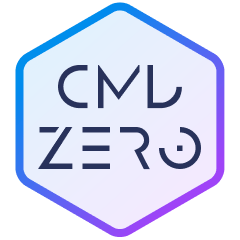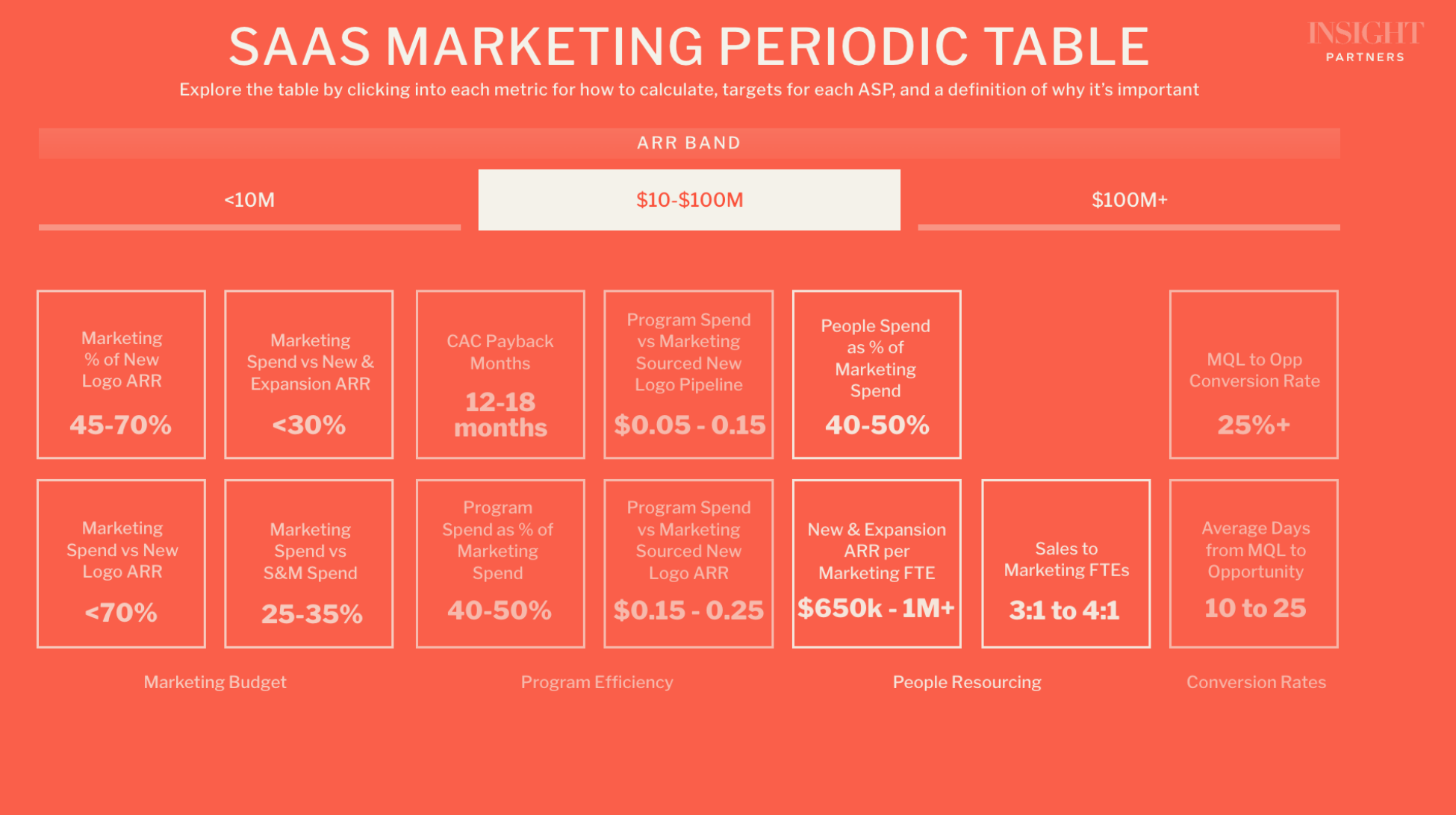
Foundations of pricing strategies for early-stage founders — and avoiding the common pitfalls

Pricing should be top of mind at every stage of growth, from Seed to Series D. Getting your monetization strategy right not only provides your customers with value equal to your price point but also helps you scale faster.
In our recent webinar with Insight’s Jorge Rosales and Rachel Weston Rowell, senior vice presidents in the Product and Technology Center of Excellence, we discussed mastering monetization for B2B SaaS products, and four fundamental building blocks emerged: Alignment, Segmentation, Expansion, and Value Proposition.
1. Alignment
You need to clearly communicate the value of your solution so that what’s expected matches what is offered. This requires your sales, marketing, and product teams to be working in concert. “If you don’t have consistent messaging between what your marketing team is putting in their campaigns, what your sales team is saying to prospects, and what your product is actually doing — you’re not going to be able to fully capture the value that your solution is offering,” says Rosales.
“If you don’t have consistent messaging between what your marketing team is putting in their campaigns, what your sales team is saying to prospects, and what your product is actually doing — you’re not going to be able to fully capture the value that your solution is offering.”
Alignment between your sales and customer success teams and the product strategy is also vital for scalable growth. “With a lot of companies, when you take a look at how their sales and customer success teams are composed and how the product configuration is, it’s not very clear how they can expand over time because the teams are not incentivized to do so, or the product doesn’t allow for it.”
So it’s important for teams to be aligned, but it’s also important to leave room for product flexibility. If you lock in a specific product design too early, you can be forced to rebuild parts of the product down the line to allow for a better monetization strategy, where you can more easily monetize new features and introduce tiered pricing. But if you have that alignment and flexibility at the start, your product and monetization strategy will evolve together.
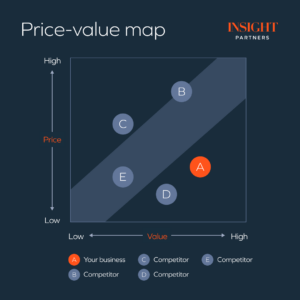
Rosales notes that the best-in-class companies seen at Insight make these forms of alignment on monetization strategy a “super high priority for their faculty at C-suite level.” CEOs and C-suite-level executives should be having conversations regarding an effective monetization strategy at every stage of growth, to ensure that the whole organization is aligned.
And this only becomes more complicated as you scale. “As companies become successful and grow, it really does become a Venn diagram,” says Weston Rowell. “Product strategy is just a piece of the bigger business strategy which intersects with marketing, sales, etc.”
2. Segmentation
Your product likely caters to various customer types with distinct use cases. For example, if you are selling to businesses, smaller teams with 10 or fewer employees may need access to different features than enterprise customers with hundreds of employees. Tailoring your monetization strategy to these different needs through segmentation is a key part of scaling your business.
“You should be able to identify different needs: how customers use your product and how they value each feature so that you can then package your product in a way that speaks the right language to each different segment,” says Rosales. “That’s why monetization and segmentation go hand in hand with how your product and packaging are configured.”
The use cases that customers have for your solution should define segments. You should be able to identify which features are critical for each segment based on their use cases, and which features aren’t. Start by looking at how your current customers are using the product. How do usage and behavior differ by different segmentation dimensions such as number of employees, revenue, geography, and demographics? Finding commonalities can act as an initial guide to how to segment your customers.
Segmentation becomes more important as you grow as it becomes more complicated. Redefining these segments as you scale is too often overlooked — and, in turn, potential opportunities are missed. Customer segmentation is an integral part of the product development process and roadmap — something to be revisited early and often. “Because if we aren’t, then when it becomes time to think about how to monetize, there’s a lot of backtracking,” says Rosales.
Start by identifying your segments and their corresponding use cases, and then map that onto your product features. This will help define the specific ways in which your product serves each segment’s needs.
By identifying the key features that each segment values, as well as those they don’t, you can hone in on a fine-grained and targeted tiered pricing structure, creating packages tailored to specific needs and use cases, as in the chart above. In other words, centering the messaging to each segment around how their “must haves” features address their needs ensures that each solution speaks the right language to the right audience.
How do you know if you’ve got it right?
If customers within a specific segment demonstrate a similar willingness to pay, you’ve probably got a strong pricing approach — although it might also indicate that you’ve left money on the table if you are not getting any pushback from prospects on your prices. If the willingness to pay varies significantly within a given segment, it might be time to reassess your pricing strategy.
3. Expansion
The right pricing strategy should allow your business to grow — and define how your customers will grow with you.
Here are some considerations for designing a monetization strategy that’s fit for a strong land-and-expand approach.
- Value-metric growth: Choose a metric that highlights your solution’s value and drives expansion revenue. In some cases, using a usage-based metric is feasible if it aligns with the value provided, however this is not something that’s applicable for all companies.
- Package growth: Your capacity to scale should align with your customers’ evolving needs. As they become more familiar with your product, they will become aware of other features they’d benefit from. Initially, customers might require basic functionalities, but by packaging your product well, you set up a clear trajectory for expansion that scales with their maturity.
- New product growth: Balance the costs of creating a new product against expected ROI. Successful companies prioritize understanding their monetization approach before allocating resources to product development. Assess whether the product meets a genuine market need before investing in it. “The product needs to be able to support the monetization strategy,” says Weston Rowell. “It’s really important you have these conversations upfront because you need to think about how you’re going to get the money before you spend it.”
- Add-ons: Ancillary offerings can help capture more value over time. Build the flexibility to include add-on features into your product as you’re creating it.
4. Value proposition
Your monetization strategy goes together with your value proposition. While it’s important to understand how your competitors position and price their products, don’t just copy their prices. Your product’s pricing should reflect its differentiated value proposition and how it addresses a specific pain point — and customers’ willingness to pay hinges on how well you communicate it.
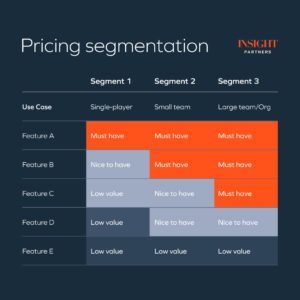
Is your offering unique? Have you validated that this demand hasn’t been met? Competitive positioning is all about understanding how you outperform your competitors.
“Is your solution critical to customers in the market? If the answer is that it’s extremely critical and your performance is above that of your competitors, then you should certainly be able to command a premium over your competitors.”
“Is your solution critical to customers in the market? If the answer is that it’s extremely critical and your performance is above that of your competitors, then you should certainly be able to command a premium over your competitors,” says Rosales.
How do you know if you’ve got it right?
- You’re seeing customers within a particular segment willing to pay a similar amount for your product or solution.
- Win rates are high enough and consistent.
- Customers are not confused by your pricing strategy. Potential customers don’t need to love your pricing, but it should not confuse them.
- There is an even distribution of customers among different tiers or subscription packages of your solution. If you’re getting 90% of your deals through your entry tier, you’re giving away too much. Similarly, if selling is essentially limited to the premium tier, you might be leaving money on the table.
How should your monetization strategy evolve as your company scales?
Pre-product market fit
Before achieving product market fit, the responsibility of a monetization strategy lies with you, the founder. Focus on identifying the key metric that best reflects the value proposition of your product or service and start building your monetization strategy around it.
What metric do you choose? “If you’re in an industry where customers are trained to think with traditional metrics, like per user, then you have to spend the time to understand whether or not it’s worth trying to change that metric,” says Rosales.
However, if your product addresses a specific and unmet need within the industry, then developing or adopting a unique key metric could be an advantage.
“Making sure that you speak the right language and that you highlight the right things for your prospects and your customers is key to capturing their willingness to pay.”
Another crucial step at this stage is to gauge market demand and understand how price-sensitive your customers are. Engaging with potential customers to understand if your solution aligns with their needs is a great first step. “Making sure that you speak the right language and that you highlight the right things for your prospects and your customers is key to capturing their willingness to pay,” says Rosales.
Use A/B testing to experiment with different pricing strategies, explore price sensitivities, and analyze deals where customers readily accept your pricing to get ideas for future strategy adjustments.
Early product market fit
Once you show early signs of product market fit, the monetization strategy should be a joint effort between the founder and the product team.
Start implementing tiered packaging, offering multiple tiers to find a balance between encouraging product adoption and creating differentiated pricing, highlighting the value proposition of each tier. Tiered packaging also helps in finding product market fit with each market segment, by identifying the value proposition that matches their specific needs.
You should also use A/B testing to get a more fine-grained understanding of the price sensitivities and willingness to pay of the different segments you cater to. “You should be able to start testing higher price levels to understand pricing headroom,” says Rosales. “Don’t be scared. You should be able to do this with deals to test more aggressive prices.”
Growth stage
During the growth stage, responsibility typically falls to the product, product marketing, and business operations teams.
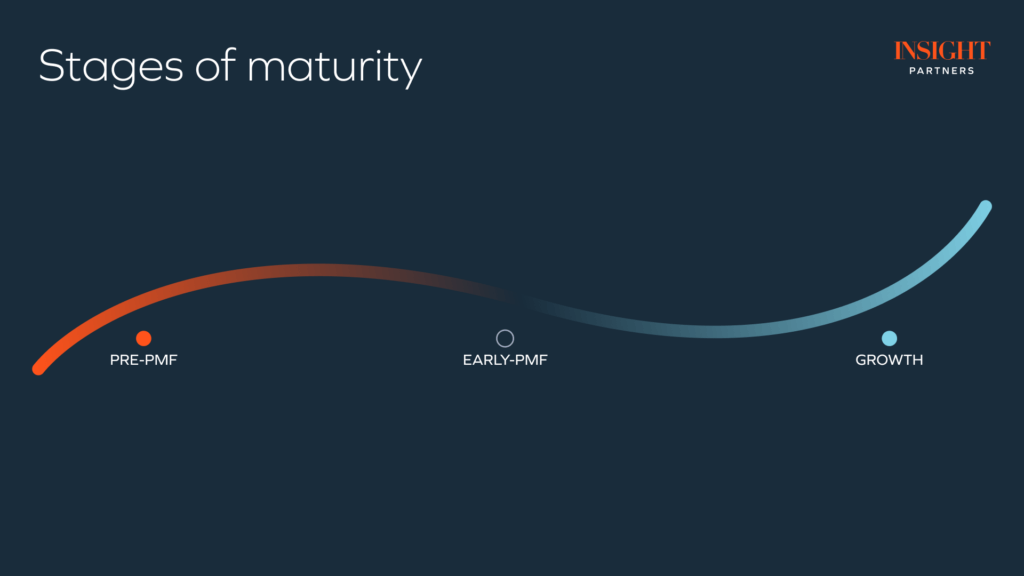
This phase is ideal for reflecting on and potentially reassessing your monetization strategy. “Now here, you can start thinking about your monetization metric and changing it to ensure that it’s actually driving sufficient expansion,” says Rosales.
One key challenge here is integrating new products and features within the existing tier system; determining whether to offer everything new for free, release it all in a single pricing tier, or charge individually for each new feature. Finding the balance here will depend on the price sensitivity of each of your customer segments and experimenting to find what works.
Throughout every stage of growth, you should be continuously refining and adjusting your pricing strategy. Regularly assessing customer interest in your product is necessary, but evaluating their willingness to pay for the value you offer is just as important for a sustainable and profitable monetization strategy.
Avoiding common pitfalls
- Make sure each package’s value proposition is clearly communicated and tailored to buyer needs and maturity levels, focusing on addressing pain points and not on features. As Rosales puts it, “Companies buy solutions, they don’t buy features.”
- Understand the role each package plays in your “land and expand” strategy and how you’re going to monetize it. Don’t create products or features without first defining their role and outcome in driving adoption or expansion.
- Prices are often too low. If you’re not receiving any pushback from customers, consider increasing your prices.
- Implement an annual 5 to 7% + CPI price increase to capture value delivered, ensuring scalability with user or usage-based pricing metrics.
- Evaluate whether to bundle new features with existing packages or charge separately for each release to optimize monetization.
- Introduce implementation fees as a one-time charge to enhance commitment and as a negotiation lever, ensuring a vested interest from the customer’s end.
- Prioritize customer research. Customer insights are as important to your monetization strategy as your product strategy. “You have to spend time talking to customers and companies to understand their perception of your value,” says Rosales.
Ultimately, a strong monetization strategy revolves around creating real value for your customers, and pricing according to that value. Identifying your customer segments early on allows you to do this well for a wide customer base, meeting the specific needs of customers with different use cases for your solution. As your company scales, your monetization strategy has to evolve — a conversation to continue through every stage of growth.




